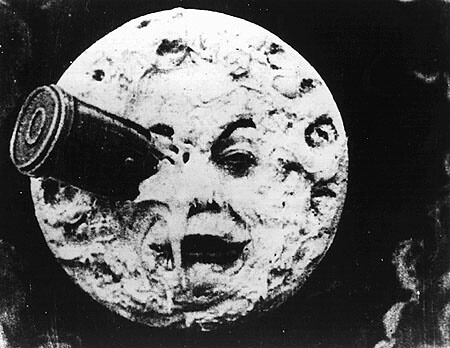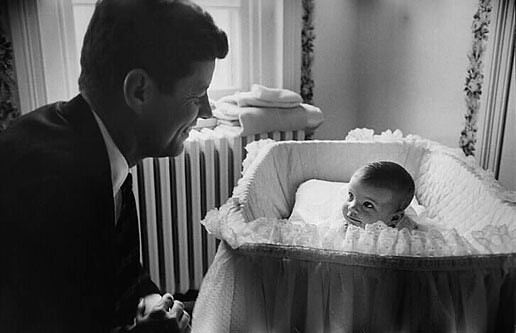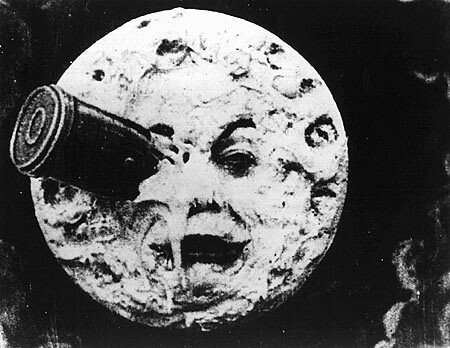That is why this story from ancient Egypt is still capable after thousands of years of arousing astonishment and thoughtfulness. It resembles the seeds of grain which have lain for centuries in the chambers of the pyramids shut up air-tight and have retained their germinative power to this day.
—Walter Benjamin, The Storyteller1
Information isn’t memory, and it does not accumulate and store for memory’s sake. It works exclusively for its own profit, which depends on the prompt forgetfulness of everything clearing the way for the sole, and abstract, truth of the present to assert itself and for information to cement its claim to being alone adequate to that truth.
—Jacques Rancière, Film Fables2
From the end of World War II until the moon landing, cinema could no longer be linked to “a whole thought, triumphant, collective, but to a hazardous singular one.”3
After the war, a kind of pedagogy of perception came about, with the formal, moral articulation of Neo-realism, and its emphasis on the sequence shot. The spectator was left to wander inside the phenomenological reality of the film on his or her own terms—alone, as an individual. World War II had made collective projection impossible to stomach. The very nature of the spectacle’s completeness—which developed concurrently in Hollywood and Nuremberg, as Paul Virilio points out—was viscerally repellent for being fascistic and intrinsically manipulative.
Deleuze wrote that “montage could become secondary with the sequence shot’s new forms of composition and association. Depth, the depth of the image is assumed as delusion (state propaganda), so the image assumes its flatness as ‘surface without depth.’”4
However, this state of affairs only lasted until the most sophisticated rhetorical device of our time silently appeared, allowing for a newly “triumphant, collective” narrative to take shape again, fully formed. This new narrative was totally invisible—not claiming to be a projection of any ideology whatsoever, so much as a mere peephole, a telescope to the stars. As Tom Levin points out: the rhetorical apparatus of LIVE is somewhat analogical to the traditional rhetorical power of the indexical iconic photographic image.5 In other words, a photo says “this is it, this is proof,” and LIVE was the inheritor of this incommensurable power. Nowadays it is clear that LIVE is also a form subject to post-production: LIVE is a filter that can be applied to an image much like the way a fake patina is applied to a copper surface for an inverse effect.
Love, Affair
What is cinema? The word for a love affair with a moving image in the dark—an experience of “blocked vision” in which the body accepts its stillness in order to allow for the magic trick of movement to unfold in front of it, or rather within the internal screen of the mind. Cinema is a being who could only show its true face in the moment when it was dying prematurely. It is a verb rather than a thing (as authors such as Dominique Paini have treated it), an unfolding which began with the lit vitrines in the natural history museums of the nineteenth century: a succession of images, one after another, in the darkness. A verb that went into a loop, a cliché, a halt, when it walked absent-mindedly through an invisible threshold to another apparatus, one that broke the continuity of its own history: a new apparatus that placed the image in a non-site, divorced from the body, where the image no longer affirmed or denied anything but its eternal presence. The machine of LIVE: broadcast television and the 24-hour vacuum-packed continuum.
The transition from cinema to television is a transition from a realm of ethics/aesthetics to a realm of the purely technical (one to one, that which has no supplement). As a paradigm, cinema projects and pronounces that it is a language, whereas media or television constitutes a disappearing act—appearing as nothing more than “that which only shows what is already there.” Business and advertising lubricate the wheels of this machine for which a single word crystallizes its every facet: “infomercial.” Something is being sold or negotiated while it is presented as information. In this way, the image enters a Möbius strip. What is a cliché but that which can no longer move forward? A history that has reached its end and loops back on itself in a state of paralysis.
French journalist Serge Daney has a revelation at an early age, when he reads in an article by Jacques Rivette about a traveling shot in Gillo Pontecorvo’s film Kapo.6 Rivette speaks about the camera traveling on a body hanging on barbed wire in a concentration camp. Kapo is one of the first films about the Holocaust, and Daney, following Rivette, sententiously identified this traveling shot as a pornographic image. Something changed in the camps for Rivette and for Daney, something related to the image. This traveling shot in a movie he never saw was for Daney the point of no return: his own paradigm as a writer for the rest of his life. The Kapo travelling shot represented what could no longer be shown—true horror had now become impossible to depict. The first death of cinema took place in a desert, on the ruins of Berlin, if you will—in a mute world whose coordinates had collapsed. There was no longer a clear path from original, savage barbarity to the bright lights of rationality. Then came cinema’s second death, which was called television.
Since the dawn of television, all images have been conspiratorial. Television is a sort of cross between Méliès and The Wizard of Oz—a means of controlling society by way of the rhetorical device of LIVE. Television and cinema are ultimately two epistemological metaphors that can be spun and woven into a history, and this history always ends up being our own. We are double helix beings: the thing and its representation are always coiling around each other.


Spin
Here we will look at two conspiracy theories, but not in the interest of playing detective in a game of confirmation or denunciation, but rather in order to approach a history of the image with the premise that they might be true. Let us first distinguish ourselves from rogue conspiracy “experts” such as Bart Sibrel who have devoted themselves to uncovering the falsification of the 1969 moon landing, or the many others who seek to prove that Flight 77 did not in fact crash into the Pentagon (it didn’t). Let us be anti-experts who speculate only with our available rhetorical capacities, and without evaluating for truth or falsity. Let us refrain from entering the labyrinth where logic and the occult become further and further entangled. Instead, we will simply take the images upon which our historical perception is based and alter their course, project them in a different direction—backwards, for example—starting from an ethical premise that sets off for the past from the present like a silent drone. All this without seeking the history that does justice to truth, but rather the truth that does justice to history.
Gods
The story begins with Richard Nixon. Nixon, as is well known, was broad-minded and receptive enough to understand the ambiguities of fact and fiction. He was, after all, the American president who in 1971 broke the ties between paper money and the solid gold locked away in the Federal Reserve Bank. So when the time came to produce a much-needed sense of destiny for the American people in the midst of the grimness of 1969, he fully understood destiny to be a simple matter of image, nothing more.
Nixon was a producer of the same kind as Jeremy Prokosh, a character in Jean-Luc Godard’s Contempt. Prokosh is based on the famous Hollywood producer Joe Levine (one of Godard’s bête noires). Prokosh—played by Jack Palance—famously says, “I like gods… I know exactly how they feel,” as he works on a film adaptation of Homer’s Odyssey.7
To be more concrete: let’s assume that the trip to the moon was a film production. For the sake of argument, let’s consider it a fact. In refraining from arguing over what is possible or impossible, true or false, feasible or unfeasible, we will not deal with the shadows of moon rocks pointing in different directions though there is only one source of light. We will not note the absence of stars behind the astronauts’ heads and we will not ask why they are lit from both the front and back simultaneously, nor why the dust under the lunar module shows no trace of disturbance from landing, and so forth. Rather, we can simply take the conspiracy theory to be true and proceed to embark upon a brief journey through the twentieth century with this premise in mind—a journey different from one premised on certain events understood to have changed the course of history. However, the possibility remains that this digression is actually our true history. Or rather we can suppose that this can be our reality, as a proposal or projection from the present into the past.
The general argument also requires accepting a second, more recent conspiracy theory about what happened in 2001: the allegation that it was not American Airlines Flight 77 that crashed into the Pentagon on September 11, but a missile or fighter plane. According to this idea, the lunatic Donald Rumsfeld would link these two monumental historical fabrications: he was a top Nixon aide in 1969 and famously manned the Pentagon in 2001 as Secretary of Defense. Rumsfeld would in this case be not so much an implacable warrior, but rather the true inheritor of Méliès’ legacy: the artist/trickster who understands the position of the image at a certain historical juncture—what it can do and what charm the illusion requires within new historical paradigms. Was this not the man who formulated the intricate philosophical question about “known unknowns and unknown unknowns” in anticipation of a possible insurrection in Iraq? Could anyone argue against this kind of geniality?
Hearing this voice, we can easily imagine Rumsfeld exclaiming during a meeting at the White House, at a moment when he suddenly understands cinema: “The event of the moon landing is an image of an event, not an actual event!” And the man to catch that curveball happened to be sitting right in the Oval Office. One must remember how urgently the moon was needed at the time: the ‘Nam jungle was creeping over, and it was crucial to counter the image of a people choking on their own Napalm with that of the shining city on the hill, a people endowed with a mission. In this way “reality as imagination” and other such utopian prescriptions of May ‘68 found their real application on Nixon’s desk.


Scanlines
The function of government is to inspire its citizens to believe that they can do great things.
—Neil Armstrong, private conversation
In 1961, a reckless John F. Kennedy projected the moon onto the abstract screen of 1969—“before the end of the decade,” as he boldly asserted. When his Camelot image became that of the Dallas martyr, the prophecy became irrevocable, a destiny sealed. In 1968, NASA posited only a 1% chance of a man reaching the moon, and yet it all took place the following year without a hitch. Here lies the passage from terrestrial, logocentric reality to Walpurgis night, when shadows become indistinguishable from objects and all becomes a lunatic’s dream.
In any case, the question is an ethical one: America must not be seen to be cheating in order to reach the top of the mountain before the USSR. One must think of this projective idea of what a government can be (see Armstrong’s quote above): something related to fulfilling destiny, creating an affirmative teleology, a new measure for man. And this teleology is nothing but an image, in the broadest sense of the term—no different than the Hollywood mindset and film sets that were jump-started in Germany in 1933. A superior race there, a flag on the moon here. And in both cases the idea of a Soviet flag flying over the moon or the Reichstag was the greatest disaster fathomable.


Lost
Deleuze says that any act of creation is an act of resistance, but an act can only resist if it can de-create the facts. Otherwise no resistance is possible, the facts are always stronger.
—Giorgio Agamben, Le cinéma de Guy Debord8
NASA recently discovered that it lost all the original tapes of the moon landing.9 The only ones available for inspection are recordings of live footage that NASA transmitted to television networks in 1969. Supposedly, the resolution of the original video images sent from the moon had too many scanlines for public television. The makeshift solution that produced the footage we now associate with the landing came from a camera pointed directly at a television screen. While the clarity of the original is crystal clear, the second-generation video (a copy of a copy) is grainy, blurry, and over-contrasted—the way we are now accustomed to seeing the moon: an elegant stylistic decision by NASA, which chose a sort of impressionist surrealism over hyperrealism. It is fascinating to think that the moon landing endured the same destiny as the Odyssey: all we are left with is a secondary text from a troubadour who forgets somes lines (scanlines) from the original tale; someone who heard it from someone who heard it from Homer.
To return to the moon landing production: in 1969, television was consolidating its power around the world. Hollywood’s image factory had reached its peak and was being pushed aside by a new apparatus for the moving image, defined by a totally different paradigm—one that made us understand ourselves as super-endowed animals who could see beyond the horizon. TELE-VISION—the ideological device whose secret codename is “social control”—hides representation and presumes unmediated transparency while simultaneously calling itself the media. By 1969, the spider web of television encompassed the developed world just in time for it to witness the moon landing from its living room sofas.
The moon provides the most perfect parable for cinema: opening in 1902 with a trip to the moon and closing with the moon landing in 1969.10 Yet the 1969 landing is contaminated by a mortal, outlandish virus from which cinema will never recover. In one sense, the moon landing is the epitome of the cinematic: a collective destiny projected towards an END; but in its other face the moon is also ipso facto the very place where the origin of an image as image is hidden forever. The advent of television.
Television and cinema are on two parallel parabolas, one rising and one descending. The descending curve is the function of cinema as a literal and metaphorical projection—a collective destiny, projected into the future. As the image that reveals its origin in a projector emitting light, a creator projecting a vision, and the aforementioned idea of an END. Cinema opens a discourse in which a world emerges from an image. “Our collective dream of growing and becoming subjects,” as Jean-Luc Godard says in his video Soft and Hard.11 The second, rising curve is the function of a monster closing in: television. The key word here is, again, control: if cinema is a projection, then television is essentially a control device. But at its dawn, television is still influenced by the profile of its forebear, cinema. And in this sense, the moon production has two faces: one that darkens as the other grows lighter, as night descends upon the image.
The moon marks cinema’s point of no return—a transformative moment of self-lucidity, the bluish light of the TV set invades the room, so to speak. Cinema understands itself in light of the power of a new device promising that what is being shown is reality and not a projection—a rhetoric that in itself marks the monopoly of the real. Television is the place from which cinema could perceive itself, as a planet seen from a satellite in its orbit. The sleepless vigil of the electronic medium was perhaps a culture’s first glance at its affair with an image in the dark.


Poetry
What is the moon but the ultimate illusion, the original projection in the dark? What is the moon as opposed to the sun? The beam of white light isolated in the theater of darkness, not the light of day that flattens the real, but the artificial, phantasmatic, photomatic, that draws demons and angels in the dark and makes nightmares gallop over clouds. The moon is crafty like witchcraft, and like cinema—an illusion whose founding myth in the twentieth century was the funky animated trompe-l’œil staging of Méliès’ A Trip to the Moon in 1902. Has any story been more perfect and coherent?
In 1969, the moon is the epitome of an image, whether of the cinematographic dream or of the poem that humanity has written through the centuries. Taught to differentiate a simile from a metaphor, we learned that the moon is not “like cheese,” but that it “is cheese.” Mission accomplished: we are the subjects of the American Moon. It made the people of the United States universal just before its echo was blown into the endless cave of 24-hour live.
Pentagon and Full Circle
Time to get back to my life.
—Paris Hilton, Paris Hilton’s My New BFF
Now for the part about the Pentagon. If the moon production stands at the summit of Hollywood’s camera, then the Pentagon is the cylinder of another lens—one that the world can’t get enough of. If you set out to fake an event in ‘69, then you stage it in the grand old tradition of the studio setup. But if you want to fake an event in 2001, you do it in front of a surveillance camera. This is the space odyssey we’ve travelled through in the last thirty years. Suspicion is everywhere except in front of that surveillance camera, whose rhetorical power lies in its transparent, showbiz costume. The real destiny of tele vision (as was already embedded in its name) was surveillance—CCTV or Reality TV, which are the many faces of the same crystal ball. Surveillance is television finally coming down to the bone and gnawing on it, what it set out to become from the beginning: a long-range articulated peeping hole, the promise of periscopic vision—in short, the promise of transparency, the most complex fabrication of language. The world making its own cinema without anyone’s help. And like the lotus-eater of the Odyssey, whose name comes from what he eats, the television viewer can only ask questions to the screen using the vocabulary that the screen has previously offered him. All plays out as reformulation.
Coming back to the point: the expression in the Pentagon’s think tank this time must have been: “It doesn’t matter that the whole planet sees X image. Images no longer mean, they can be made to spin in any direction.” In metaphorical terms, it is no longer the image of an event that counts, but rather the event of an image—less a question of what happens in the image as what happens to the image. Reality is a matter of having twenty cameras pointed at a person going about “real” life. The subject is not an actor—that’s the point. The subject is the real thing: she is having a real conversation in a real office in a regular day of her internship at Teen Vogue in Los Angeles. Like a neo-futurist, neo-cubist painting, the countershot of her face as she reacts to her new boss’ words is composed in an editing suite. There are so many takes and so many angles on her face in each second that literally any expression can be fabricated by splicing them together. Though she is not an actress and she is not in a studio, one can no longer make out the difference. She is raw material acting for the post-production stage (just as the effect of LIVE can be post-produced).12 Imagine a cartoon modeled on her, and notice how there is basically no difference between her body and her animation—she is the animation. We are in the very moment when virtual reality has become literally indistinguishable from its double; a believable image needs to look imperfect, or else it will be unconvincing. Our flight away from the paradigm of image as proof has taken us so far up into the ether that no safety net could ever catch our fall.
Not much needs be said about the ghost plane that hit the Pentagon. The plane cannot be seen on tape, though it passed in front of some eighty-five surveillance cameras whose tapes were confiscated by the FBI minutes after impact. The three videos that the FBI did release (after a lawsuit) can still be watched, over and over again, on YouTube—which in its turn is killing television just as television did cinema in.13 Only this is a different kind of death. This is death from the inside, like the way a parasite consumes an animal. Yet it is still unclear exactly what YouTube is, though one can already make out a sliver of its profile. While the Web 2.0 paradigm is from a certain angle a beautiful means for the user to take command of content, this takes place at the time when a machine similar to that of Kafka’s “In the Penal Colony” has written its sentence so deep into the body of the culture that it can do nothing but repeat the phrase imprinted in its flesh. So the user channels the history of television as his or her own history, digitizing advertisements from the ‘80s because that is where his or her affective memory lies. In spite of all the YouTube–MySpace–iChat freedom, this brave new user has already consumed so much television from birth onward that the television already installed in the user’s consciousness continues to be fully operative. Like a parrot raised in captivity, there is no channel for freedom, even when that channel is open source.
To draw a circle here: a new mega-historical fabrication—a contemporary moon landing—would supposedly be shot by a user and posted on YouTube. The original tape would be lost, and the pixelation would serve as an art historical correlative to the grain of the moon video—what Seurat is to Monet, what Paris Hilton’s erotic night vision is to the terrifying night vision from the Baghdad Hilton in 1992, when CNN saw its golden opportunity to go 24 hours live. At the moment it remains unclear whether YouTube can be considered alongside cinema and television as a third force in the chain of cataclysmic events within the ecology of the moving image. As Chairman Mao put it when asked what he thought of the French Revolution: it is too early to say. Yet there is also no need to be pessimistic about its possibilities for fostering a collective contestation of the discourse of the media. Perhaps YouTube may still live up to the promise of its affirmative You.
Walter Benjamin, “The Storyteller: Reflections on the Works of Nikolai Leskov,” in Illuminations: Essays and Reflections, ed. Hannah Arendt, trans. Harry Zohn (New York: Schocken, 1969), 90.
Jacques Rancière, Film Fables, trans. Emiliano Battista (Oxford: Berg, 2006), 157.
Gilles Deleuze, “Optimisme, pessimisme et voyage: Lettre à Serge Daney,” in Serge Daney, Ciné journal, vol. 1: 1981–1982 (Paris: Petite Bibliothèque des Cahiers du cinéma, 1998).
Ibid.
See Thomas Levin, “Rhetoric of the Temporal Index: Surveillant Narration and the Cinema of ‘Real Time,’” in CTRL Space: Rhetorics of Surveillance from Bentham to Big Brother, ed. Thomas Levin, Ursula Frohne, and Peter Weibel (Karlsruhe: Center for Art and Media, 2002), 578–593.
See Serge Daney, “The Tracking Shot in Kapo” (1992), trans. Laurent Kretzschmar, Senses of Cinema 30 (January–March 2004), →.
Then there is 2001: A Space Odyssey (1968), whose maker Stanley Kubrick is said to be the director of the trompe-l’œil moon landing film in a famous urban legend that goes by the name of “Area 51.” Everything seems to correspond here, since, that film is made a year before the moon landing movie and the link to the year 2001 will be vital to our argument. William Karrel’s mockumentary “Dark Side of the Moon” is a beautiful elaboration on this myth; it has interviews with Donald Rumsfeld, and it is shot in 2002…
Giorgio Agamben, “Le cinéma de Guy Debord,” in Image et mémoire (Paris: Éditions Hoëbeke, 1998), reproduced at → (accessed February 15, 2004).
Believing this story entails also believing that a certain film producer in Australia, who had borrowed some of this footage in 1979 for a film on Pink Floyd’s Dark Side of the Moon came to think he was the haphazard savior of one of the most important documents in the History of mankind. But that story was never followed through. See Carmel Egan, “One Small Step in Hunt for Moon Film World Didn’t See,” The Sydney Morning Herald, August 20, 2006, →.
“Le voyage dans la lune,” directed by Georges Méliès (1902).
Soft and Hard (A Soft Conversation Between Two Friends on a Hard Subject), directed by Jean-Luc Godard and Anne-Marie Miéville, (1985).
This is similar to the way in which the outcome of a presidential debate could be tampered with retroactively in a very dark place nicknamed “spin alley,” at the height of the dizzying second Bush presidential campaign.
Here we don’t speak of a new camera; still, the dimension shift, literally and metaphorically, may be as radical as the one that goes from cinema to TV. See →.

